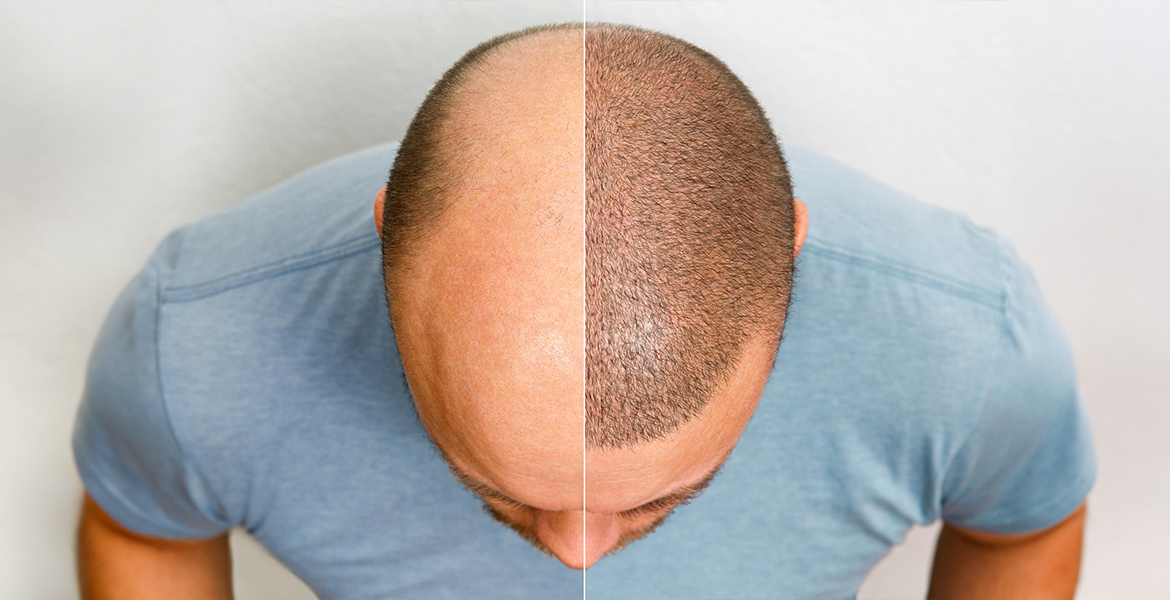Hair Transplantation at Guilford Dermatology

Understanding Hair Transplantation
Hair transplantation is a surgical procedure designed to restore hair to areas of thinning or balding. It involves relocating hair follicles from one part of the body, typically the back or sides of the scalp, to the balding or thinning areas. This guide will provide a comprehensive overview of the hair transplantation process, including the techniques used, the benefits, and what to expect during recovery.
Types of Hair Transplantation Techniques
Follicular Unit Transplantation (FUT)
FUT, also known as the strip method, involves removing a strip of skin from the donor area. This strip is then divided into individual follicular units, which are transplanted into the balding areas. This method allows for the transplantation of a large number of grafts in a single session and is ideal for individuals with significant hair loss.
Follicular Unit Extraction (FUE)
FUE is a minimally invasive technique that extracts individual hair follicles directly from the scalp using a specialized punch tool. This method leaves tiny, dot-like scars, making it a preferred choice for patients seeking a less invasive option with minimal downtime. FUE is particularly beneficial for those with limited donor hair or who want to wear shorter hairstyles.
Benefits of Hair Transplantation
- Natural Appearance: Hair transplants provide a permanent solution for hair loss, resulting in a natural-looking hairline.
- Long-Lasting Results: Once the transplanted hair follicles establish themselves, they continue to grow for a lifetime.
- Low Maintenance: Transplanted hair requires no special care or treatment beyond standard hair care routines.
- Boosted Confidence: Restoring hair can significantly enhance self-esteem and confidence.
The Consultation Process
During your initial consultation, our dermatology specialists will assess your hair loss, discuss your goals, and determine the most suitable technique for you. This session includes a detailed examination of your scalp, evaluation of hair density, and a review of your medical history.
Preparing for the Procedure
To prepare for your hair transplant, you may be advised to:
- Avoid blood thinners, alcohol, and smoking for a specified period before the surgery.
- Follow specific instructions regarding your medications and any necessary pre-operative tests.
- Arrange for transportation to and from the clinic, as you may be sedated during the procedure.
What to Expect During the Procedure
The hair transplantation process typically lasts several hours, depending on the extent of the procedure. Local anesthesia will be administered to ensure your comfort. Our experienced team will carefully transplant hair follicles into the designated areas, taking great care to create a natural-looking hairline.
Post-Procedure Care
Following the procedure, it is essential to follow your dermatologist’s post-operative instructions to ensure optimal healing and results. Common post-procedure recommendations include:
- Avoiding strenuous activities for at least a week.
- Not touching or scratching the transplanted area.
- Keeping the scalp clean and following any prescribed care routines.
Recovery Timeline
Recovery from a hair transplant varies by individual and technique. Generally, you can expect:
- Initial Healing: Most patients return to normal activities within a few days.
- Shedding Phase: Transplanted hairs may fall out within the first few weeks; this is normal and temporary.
- Growth Phase: New hair growth typically begins around three to four months post-procedure, with full results visible within 6 to 12 months.
Final Thoughts
Hair transplantation can be a life-changing solution for those experiencing hair loss. By choosing Guilford Dermatology, you can trust our skilled team to guide you through every step of the process, from consultation to recovery. If you’re considering hair transplantation, contact us today to schedule your consultation and take the first step toward restoring your hair and confidence.
Frequently Asked Questions
How long does a hair transplant procedure take?
The duration of a hair transplant can vary based on the technique used and the extent of the procedure, but it typically takes between 4 to 8 hours.
Will the transplanted hair look natural?
Yes, when performed by experienced professionals, hair transplantation results in a natural-looking hairline and seamlessly blends with your existing hair.
Is there any downtime after a hair transplant?
Most patients can return to their normal activities within a few days. However, it’s recommended to avoid strenuous activities for at least a week to ensure proper healing.








